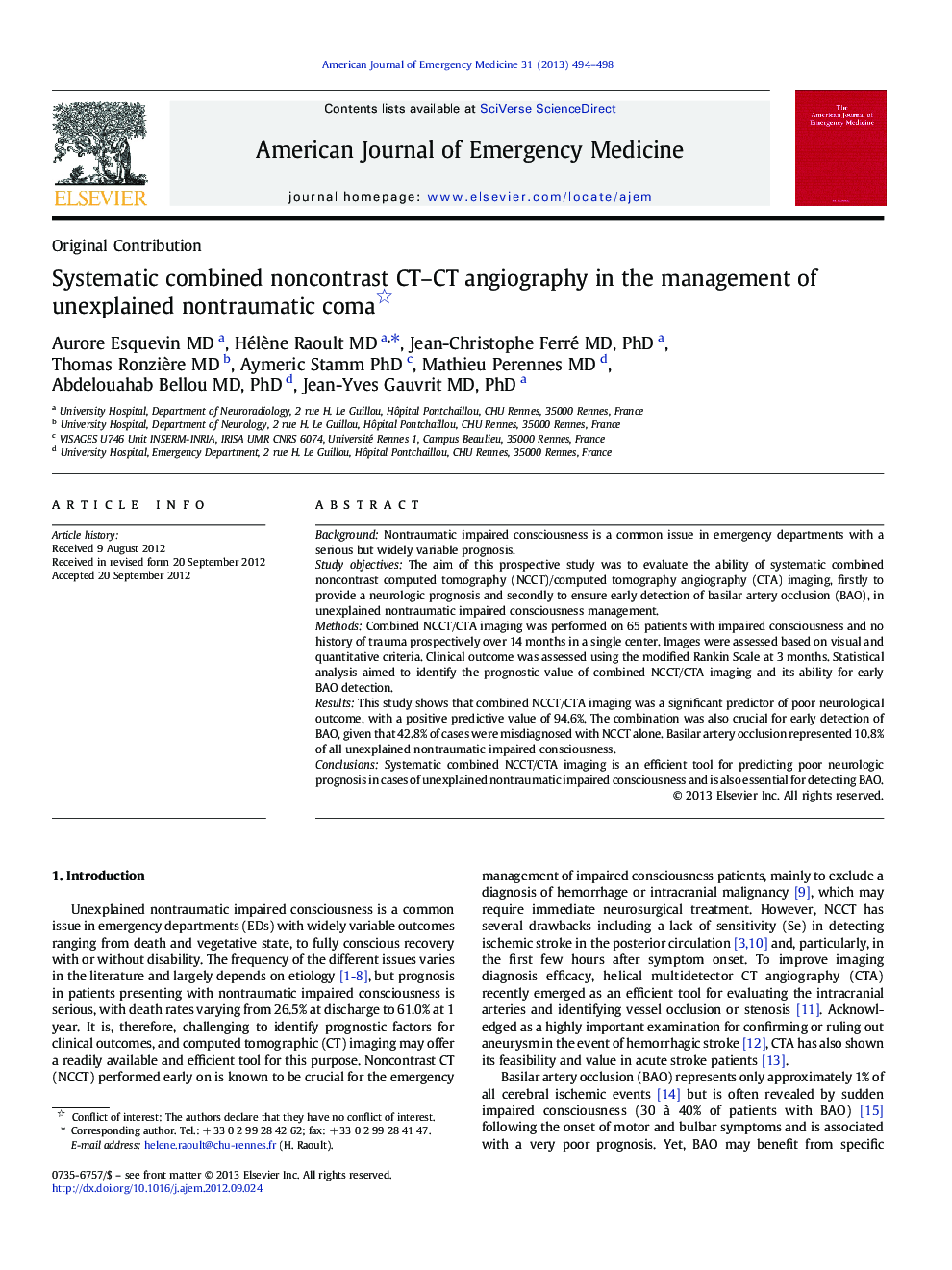| Article ID | Journal | Published Year | Pages | File Type |
|---|---|---|---|---|
| 3223818 | The American Journal of Emergency Medicine | 2013 | 5 Pages |
BackgroundNontraumatic impaired consciousness is a common issue in emergency departments with a serious but widely variable prognosis.Study objectivesThe aim of this prospective study was to evaluate the ability of systematic combined noncontrast computed tomography (NCCT)/computed tomography angiography (CTA) imaging, firstly to provide a neurologic prognosis and secondly to ensure early detection of basilar artery occlusion (BAO), in unexplained nontraumatic impaired consciousness management.MethodsCombined NCCT/CTA imaging was performed on 65 patients with impaired consciousness and no history of trauma prospectively over 14 months in a single center. Images were assessed based on visual and quantitative criteria. Clinical outcome was assessed using the modified Rankin Scale at 3 months. Statistical analysis aimed to identify the prognostic value of combined NCCT/CTA imaging and its ability for early BAO detection.ResultsThis study shows that combined NCCT/CTA imaging was a significant predictor of poor neurological outcome, with a positive predictive value of 94.6%. The combination was also crucial for early detection of BAO, given that 42.8% of cases were misdiagnosed with NCCT alone. Basilar artery occlusion represented 10.8% of all unexplained nontraumatic impaired consciousness.ConclusionsSystematic combined NCCT/CTA imaging is an efficient tool for predicting poor neurologic prognosis in cases of unexplained nontraumatic impaired consciousness and is also essential for detecting BAO.
